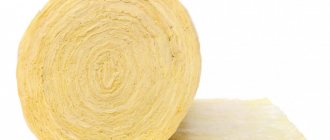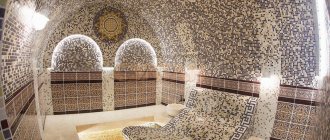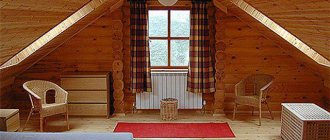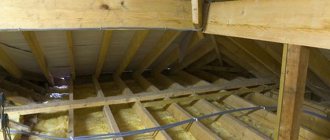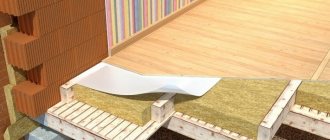wooden sauna inside
There are quite a lot of questions regarding the ceiling in the bathhouse. Some of them are covered in other articles on our site; they will be referenced in the text. We will try to reveal some of it here. Where there is already detailed material answering this or that question, just follow the links. Only things that have not yet been touched upon will be discussed in detail.
Ceiling in the bathhouse: device
In principle, there is no difference between a house or a bathhouse - the types of ceilings themselves are the same for any construction, and do not take into account the purpose of the building. Therefore, you can easily watch videos and read specialized literature on construction, which talk about the construction of houses.
However, we will always not be talking about multi-apartment buildings, there are slab ceilings, and in the bathhouse only three types are possible:
- grazing;
- hemmed;
- panel.
Flooring differs from hemming in the support points - in the first they are only on the walls, in the second - on the ceiling beams. As a result, there are various possibilities for maintaining weight: both your own and additional.
The panel ceiling is a simplification and a semi-hybrid of the previous two, and it still has more of a floor ceiling than a hemmed one.
IMPORTANT! You make the decision about what the ceiling will be during the period when the bathhouse is just being designed.
However, the decision itself is quite simple: you just need to decide for yourself
what kind of attic you want - a cold one, where no one is going to climb except cats, or a warm storage attic where you can walk around and put things there. Another option is an attic. So, the flooring is suitable exclusively for a cold attic; in all other cases, the choice is the hemming. The panel one will be closer to the hemmed one only if the beams used are of considerable thickness.
As for the device, the correct ceiling in a bathhouse consists of: boards, vapor barrier, insulation, waterproofing and, possibly, boards again . This is a standard scheme that applies to all varieties. The nuances regarding the ceiling in a bathhouse with a cold roof can be read here.
As for the ceiling height, it (as usual in a bathhouse) is a subject of fierce debate. However, rational arguments also exist. All of them are discussed in this article.
The ceiling in the bathhouse inside the steam room
For more information on using foil, see this page.
The steam room is the only place that has no analogue in a residential building. This is a combination of high temperature and humidity that affects all the materials inside. Therefore, the ceiling in the bathhouse inside the steam room may have some differences from other rooms.
The main difference between the steam room will be two layers of vapor barrier , which is done most often. Ceiling boards and beams on the attic side are usually covered with any suitable material - kraft paper, polymer film (capable of withstanding high temperatures).
However, at the same time they are exposed to steam from inside the steam room. And if it’s not difficult to change the boards, then you definitely need to spare the beams. So, partly out of pity, partly out of a desire to prevent the heat from evaporating outside the steam room, people line the steam room with foil. It shields IR radiation and is a reliable vapor barrier, so it is quite suitable for covering the ceiling in a bathhouse.
You can read about how the ceiling structure in the steam room works here.
Dimensions of the steam room
Of course, you build a steam room for yourself based on your preferences, but there are practice-tested recommendations that are best taken into account in order to avoid mistakes. The area of the steam room is determined at the rate of 2 – 3 sq.m per person.
Knowing the approximate number of steamers relaxing at the same time, it is easy to determine the area of the room. In this case, the ceiling height in the steam room is usually taken to be 2.1 -2.3 m.
Two sauna sections with dry and wet steam
Note: A higher ceiling increases the volume of the room, which means warm-up time and fuel costs. In addition, you will have to install the top shelf unreasonably high, and steaming will not be comfortable.
The stove for the steam room is selected based on the total volume of the room, and not its area.
The right ceiling in the bathhouse: choosing which one is better
What is the best material to make a bathhouse ceiling from? The wording itself suggests that we are talking about a material that would be preferable to use for this purpose.
Resin leaks from heat
There is a certain set of wood that are usually recommended for interior decoration of a bathhouse. These are mainly deciduous species; among conifers, which are unpleasant due to the release of resin (we will discuss this below), only larch and cedar are recommended.
Of the deciduous trees linden and are most often used for finishing . One of the reasons is that it is a fairly budget option.
As for the structures, it is impossible to say which ceilings in the bathhouse are better - hemmed or floored. It all depends on other factors - the construction budget, the purpose of the attic space. If money is short, the bathhouse is one-story with a cold attic, then it would be better to make a floor option.
If the construction is thorough, the attic space is of sufficient size to serve as a warehouse or room, then in this case the best ceiling for a bathhouse is definitely a false ceiling.
Those who do it themselves and are not used to working under the ceiling or at heights may find the panel option the most preferable.
Bathroom ceiling: what is best to make it from?
As already mentioned, the components of the ceiling are boards, beams, insulation and insulation.
We personally consider the following to be the best insulation options:
- vermiculite;
- expanded clay;
- ecowool;
- mineral wool for saunas.
Do not consider this list as a rating, although , to be honest, we like mineral wool the least, because it is an aging material that turns into dust over time, and it is too sensitive to the presence of moisture between the fibers. If we name the abstract properties of the best insulation for baths, it would be:
- health safety;
- non-flammability;
- tolerance of high temperatures without melting, etc.
- high thermal insulation properties;
- ease of installation;
- durability.
Styrofoam and fiberglass are not suitable. However, we have described everything about insulation for bath ceilings in this article.
As for the types of vapor barriers, among them there are also those that are more or less suitable for use in baths. What types of vapor barrier materials there are, which of them are suitable for our purposes, and which are better not to use, is discussed here.
It remains to be said about the boards for the bathhouse ceiling. What kind of wood is the most on the market? The correct answer is coniferous. That's why it's cheaper. This means that nothing prevents us from purchasing cheaper beams made from coniferous wood.
beams will be sewn up, the temperature, of course, will reach them in any case, but this is not so significant, because the main temperature is in the steam room, and there everything is not only sewn up with boards, but also with an additional vapor barrier made of foil. So there should be no resin dripping from the beams.
So, beams can also be made of coniferous wood. The lining of at least the steam room should be from the species that we mentioned above. In the remaining rooms of the bathhouse, you can hem the ceiling with anything.
Features of insulation
Not all products are used for insulation. Plastic products will deform from high temperatures. If you use plywood or fiberboard, then from the hot air they will begin to expand and change shape, accumulating moisture. These products are definitely not suitable. The best way is to finish in several layers:
- The first step is to use an insulating material that prevents water from penetrating.
- Place a second layer of insulation (for example, mineral wool).
- The third level is aluminum foil.
This “multi-layering” holds heat well and does not allow steam to escape for a long time, so heat losses are reduced.
Insulation materials can be divided into the following types:
- fibers;
- plates;
- blocks;
- wall slabs;
- backfill.
And depending on the composition they distinguish:
- Organic such as ecowool.
- Inorganic - mineral wool.
- Expanded polystyrene.
- Other insulation materials are such as technovent and technoblock.
The ceiling in the bathhouse inside and out
Of course, the best guide is one that talks about the subject “inside and out.” For those who are going to do everything themselves, we have prepared material just about creating a ceiling with your own hands .
However, the matter is not limited to the ceiling in the bathhouse inside, and an important issue from the point of view of the future fate of the building will be the issue of driving through the ceiling with a chimney pipe. It must be done with knowledge of fire safety rules, understanding which materials are suitable and why. We have collected all the necessary information on this issue in this article.
We also thought it was important to pay more attention to the issue of insulation, and we posted answers to the most frequently asked questions in the article located here.
What to hammer in: nails, screws or staples?
The lining itself is a board with a certain profile, which must have a tongue-and-groove locking connection. It is attached to the wall or ceiling using nails, screws or staples. The tools and material required to hammer in the lining in the bathhouse are as follows:
- nails, screws, staples;
- hammer, screwdriver, hardware gun;
- a mallet or a piece of clapboard for knocking a tenon into a groove;
- building level.
What nails should I take for the lining in the bathhouse? It is desirable that these are finishing nails 30-40 mm long, with an anti-corrosion coating. It’s worth taking coated screws (their length is the same, by the way). Regarding the length, you should proceed from the thickness of the board (if in a groove, then only the walls of the groove), plus you need to punch through the block to which the board is attached at least to the middle.
The staples should be the same size, although there are comrades who nail 14-mm staples with a construction stapler through a clamp, but this is rather an exception. To properly line a bathhouse with clapboard, it is better to use long staples and shoot them at an angle of 45 degrees (approximately).
Of course, it is tempting to wonder which of these methods is better. There cannot be a definite answer to this, because everything depends on the experience of a particular person. And if it is not there, then the easiest thing to do is to shoot the staples using a pneumatic gun. True, it is not cheap, and few people would agree to buy it for a one-time job. Other methods are a little more difficult to implement.
What to cover, what to finish, what to hem the ceiling in a bathhouse: advice from professionals
Well, if we’re talking about advice from professionals regarding how to decorate the ceiling in a bathhouse, then you need to give the floor to them themselves. We bring to your attention the videos that caused a completely respectful reaction from us.
Let the first video be from RusPar. Correctly, professionally, within the framework of the stated topic, you will be told how to do everything correctly:
Those who are worried about thermal protection will find this video useful, which tells a lot, in tedious detail, about what materials are suitable for protecting the ceiling and walls in the area of the stove:
Speaking about professionals, we cannot ignore the opinion of Alexey Bely, representing Teplodar. You don't have to agree, but it's still worth listening:
Well, we found a video from ForumHouse - this is a fairly authoritative forum that has been making videos about finished projects or various stages of construction work for a long time. Among them there was a video about lining - it will certainly be of interest to those of our readers who are planning to decorate the insides of their bathhouse with this material. Look, remember, maybe it will come in handy:
Well, for our part, we will consider it possible to recommend you an article about decorating a steam room, which will also contain useful information.
If frame
The frame structure is a sandwich made of (for example) boards, OSB or just boards on both sides and insulation inside. Of course, stiffening ribs are added to this - a frame, as well as steam and moisture protection, but the main thing is that insulation is already present. And if the thickness is good, then you can simply cover the OSB with a vapor barrier, fill the sheathing slats and cover the walls in the bathhouse with clapboard.
If it turns out that there is not enough insulation, then additional insulation can be done, and then everything will be the same. Before covering the steam room in the bathhouse with clapboard, you can cover the walls and ceiling with foil as a vapor barrier.
Why does the ceiling drip or sweat in the bathhouse: reasons for condensation
First, a little about the nature of condensate. This is the reaction when warm air collides with a cold object. Warm air can hold more water vapor than cold air. Therefore, if the air saturated with vapor cools (and this is what happens when it collides with a cold object), then the water vapor will pass from the gaseous to the liquid phase. And this will happen at the intersection of environments.
From here it is clear that if the ceiling is dripping or sweating somewhere in the bathhouse, then this is a cold place . Basically, warm air is forced to rise because it is lighter than cold air. At the top he encounters an obstacle in the form of a ceiling. If it is cold, then moisture condenses immediately.
The bathhouse is a room with periodic heating, which means that during the time it is not used, it cools down to ambient temperature. Therefore, the occurrence of condensation should be considered inevitable.
BUT! Proper heating gradually removes the condensation that initially forms. The entire structure warms up, the moisture turns into gaseous form.
What to do? The colder the room before starting the fire, the less you should rush to warm it up . Tune in for 4 hours of light, gradual treading. Or even set aside the day before the bath procedures to thoroughly dry the bath (in the cold season).
The appearance of condensation in a bathhouse on the ceiling in the initial stage is expected, but is it correct when it does not disappear in due time? No, that's not right. This means only one thing: you have some problems with the insulation of the ceiling.
This can be anything: from the possibility that the thickness of the insulation layer is insufficient, to the fact that the rules of ventilation and thermal insulation are violated, for example, the structure of the insulating pie.
Diagram of a false ceiling pie (explanation in the article about insulation)
CHECK: vapor barrier, which does not allow water vapor to pass through, is installed first, separating the insulation from moisture coming from the room; The waterproofing is placed second and outside the insulation, closer to the “street”. A ventilation gap of several centimeters is required between the vapor barrier and the lining.
Chronic formation of condensation will not be without sad consequences - bacteria and fungi actively multiply on damp wood, the wood rots and becomes moldy.
treating wood with antiseptics everywhere except the steam room. But this will not save you from searching for the reason why the condensate does not evaporate on its own. Perhaps these are ventilation flaws. If it turns out to be insufficient, you can connect a forced one.
How to lay: horizontally or vertically?
Unfortunately, when choosing a method for cladding the inside of a bathhouse, we cannot be guided only by aesthetics. More precisely, not so: aesthetics can be used as the basis for the choice only in a dry room, for example, in a rest room or dressing room.
If you decide to use it to decorate wet rooms (steam rooms and washing rooms), then it is better to focus on a method that minimizes future losses. By “losses” we mean possible damage to the planks from moisture, which will require their replacement.
So, what happens when the installation of lining in a bathhouse is carried out vertically? In a humid room, humidity is distributed unevenly - after all, gravity drives it towards the floor. As a result, each (!) plank also gets wet unevenly.
When it dries, this can lead to cracking, but more often, over a long period of time, problems accumulate at the bottom - somewhere there is not very good ventilation, for example, and in this place the water stagnates. Therefore, the planks begin to rot. And since we have them located vertically, the rotting area affects all the planks.
This is what’s inconvenient - in order to dismantle and replace damaged areas, you will have to cut (not replace the whole thing!), and then replace each piece. The cost of time and effort is especially clearly visible if we compare the situation with the horizontal upholstery of a bathhouse with clapboard - in this case, several strips are replaced entirely, which does not cause any special problems in dismantling and installation.
The only disadvantage of horizontal cladding of a bathhouse from the inside with clapboard can be considered a visual reduction in the height of the sheathed room, and in the bathhouse, as you know, the ceilings are already low. Therefore, as an option, you can combine both methods using the horizontal one at the bottom.
How to remove resin from the ceiling in a bathhouse
Resin is an integral part of coniferous wood. It is contained in capillary vessels called resin ducts. An increase in temperature usually causes the resin to protrude onto the surface of the wood product.
Resin leaks on coniferous wood
If you made a ceiling from coniferous wood, you will definitely encounter resin. It can concentrate around knots, “eyes,” or in so-called “resin pockets,” which are formed when the cambium of a living tree is damaged.
The best option is if you use coniferous wood, then only for the main boards and beams of the ceiling , and then sew everything up with foil, stuff the sheathing, and then install hardwood lining on top of it. In this case, nothing will leak out.
For those whose coniferous wood is not covered with anything, we can advise you to try the method we read on one forum: use a blowtorch to walk through the wood from which resin is flowing in order to burn out the resin and clog the channels. However, we have not tested it ourselves.
Periodic cleaning would be less drastic , but you will have to remove resin from the ceiling in a bathhouse many times. It can be removed either mechanically or by dissolution. (Or combining both.)
Dissolution is achieved with the following compositions:
- Mix pure acetone with water in the following proportion: 1 part acetone to 3 parts water;
- dissolve soda ash in water at a ratio of 5 grams of soda to 95 grams of water;
- a mixture of the described solutions.
Solutions should be heated or diluted with hot water. Then use a brush to apply and rub in the solution.
***
We ask our readers: write in the comments on this page what topics about the bathhouse interest you, but you did not find them on the pages of our website.




